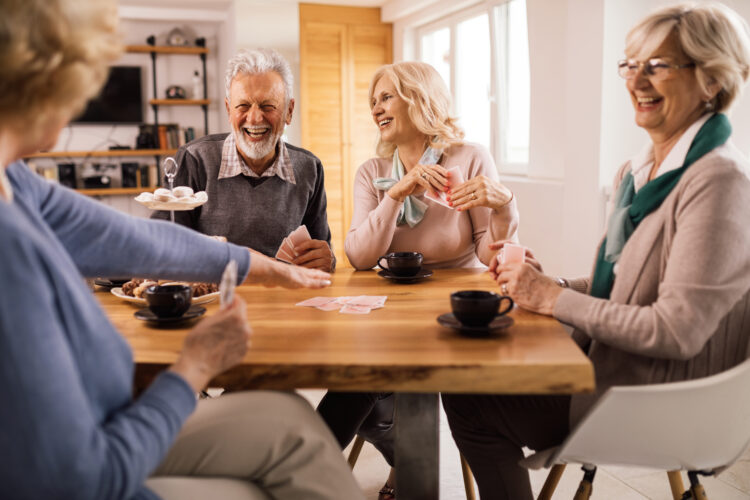Forming new social relationships is one of the key parts of senior education. It is the social interaction and community that make education more sustainable and valuable. In this blog, I will introduce four communication activities that can serve as ice-breakers or fresh energizers during a workshop, training session, or excursion for seniors.
- Hot Seat
Hot Seat is a social game that includes a hundred diverse questions aimed at understanding the personality, opinions, experiences, or preferences of the players. If you don’t have the original cards, it’s easy to create something similar. The essence of the game is that after drawing a card with a question, the player has 30 seconds to answer the question and speak fluently and continuously for the entire time. Funny situations arise when women have to describe the process of changing a car tire or men detail the recipe for their favorite dish. In addition to getting to know each other better, players learn to improvise and communicate clearly and effectively. - Picture Storytelling
The game begins with each player choosing one of the offered pictures (these can be Dixit cards, story cards, or simply various printed images). After a short time to think, each player has a maximum of one minute to present a story from their life that came to mind when looking at the picture and to explain the association that the image evoked. Participants often reveal joyful or sad moments from their past, the knowledge of which can be useful in the educational process itself. - Emojis
Before the game, prepare printed pictures of various emojis. Players choose a card of an emoji that expresses an emotion and then, in pairs or in front of the whole group, talk about a moment when they experienced that emotion or how they currently feel. I use this game as a mood barometer when I want to gauge the atmosphere among participants at the beginning of a training session. - Truth or Lie?
Divide the participants into groups of three or four. Each person’s task is to think of three interesting facts about themselves that the others don’t know (these should be facts they have not shared before). However, out of these three facts, two will be true and one will be false, made up. During the subsequent discussion, participants guess which piece of information is false and discuss how they came to their conclusion.
Using these or similar activities in education is important because it alternates cognitive activities with those that foster creativity and imagination. The brain can remember more this way, and the results of education are more lasting.
Michal Koricina




0 Comments